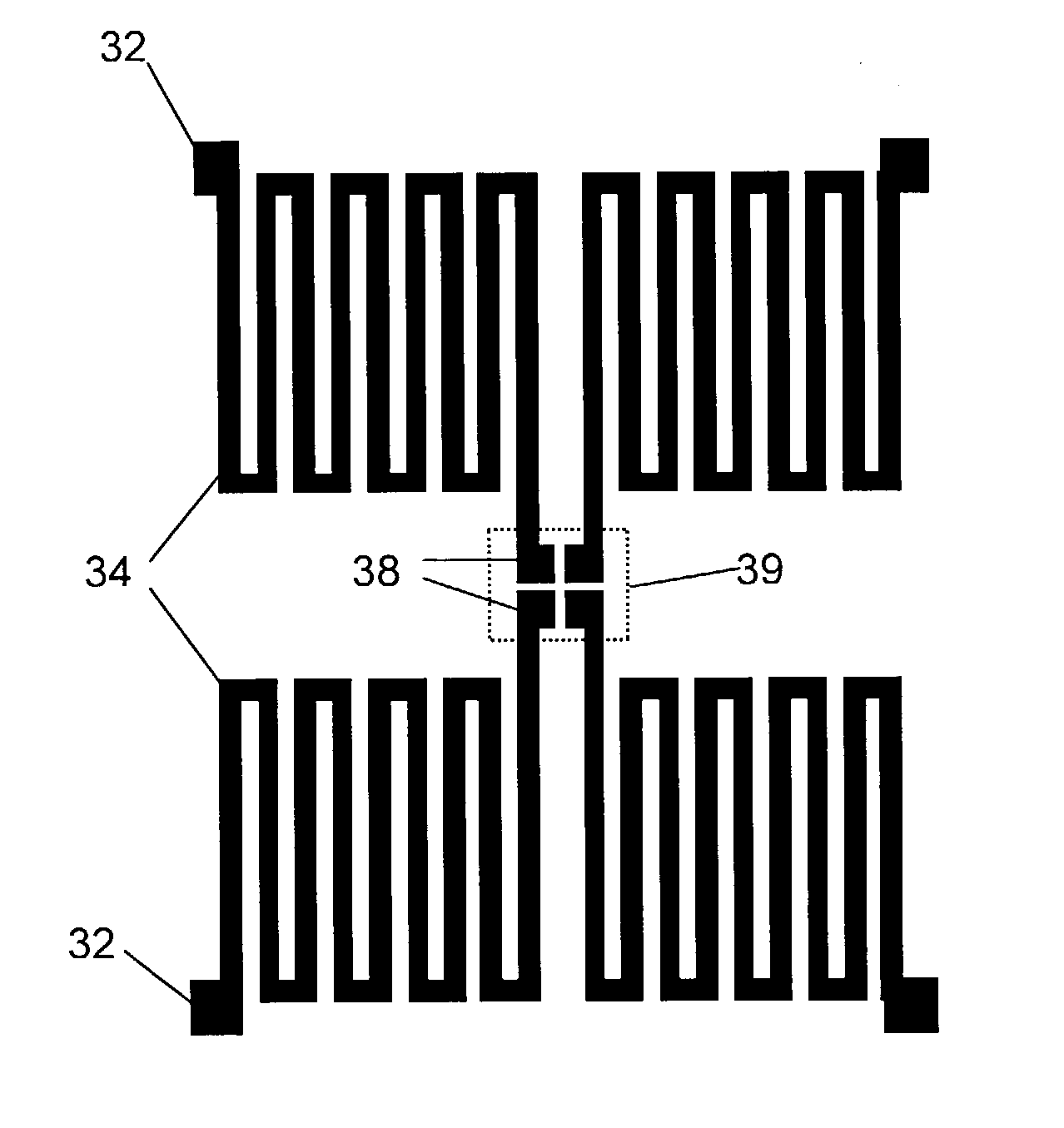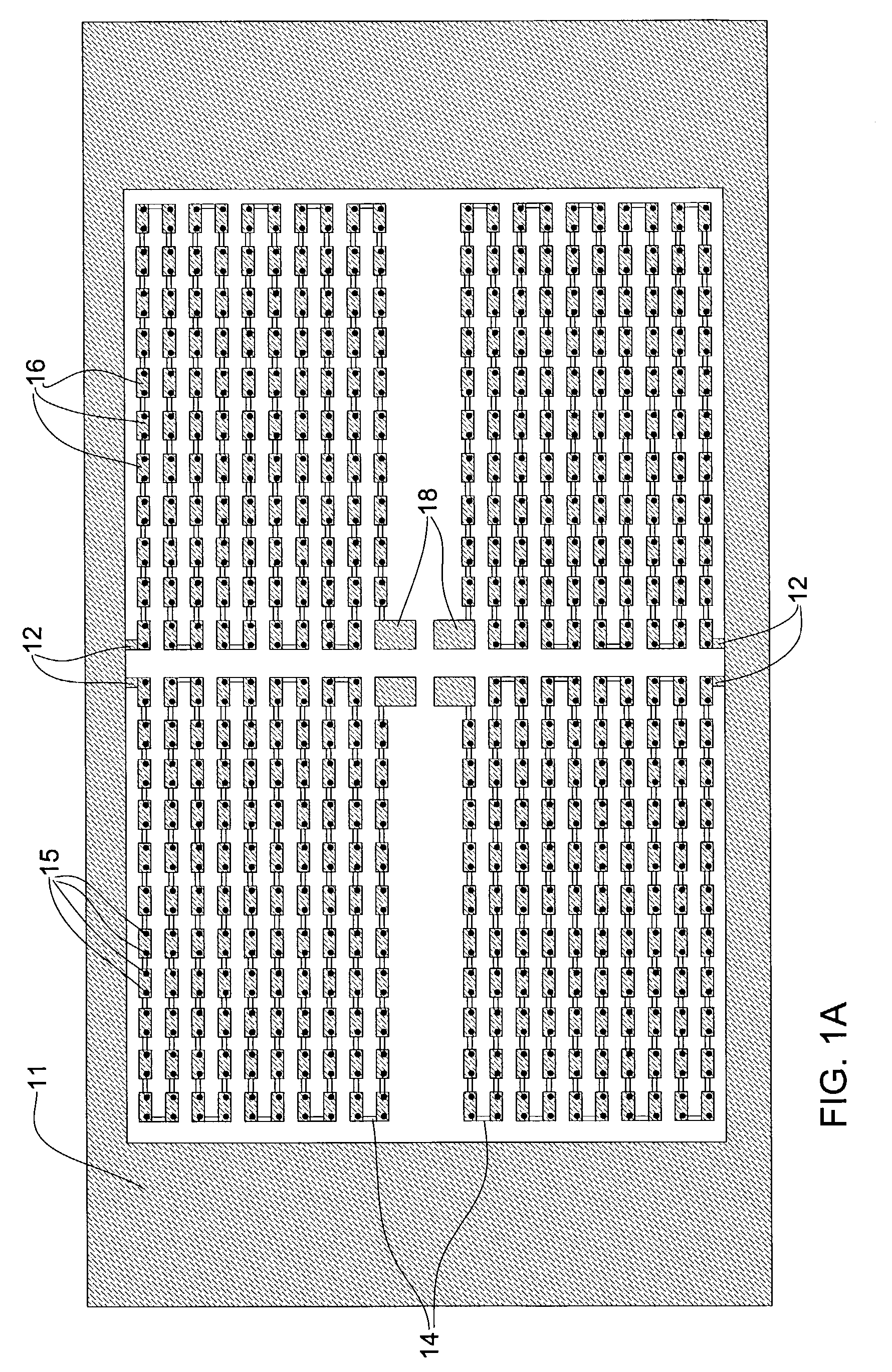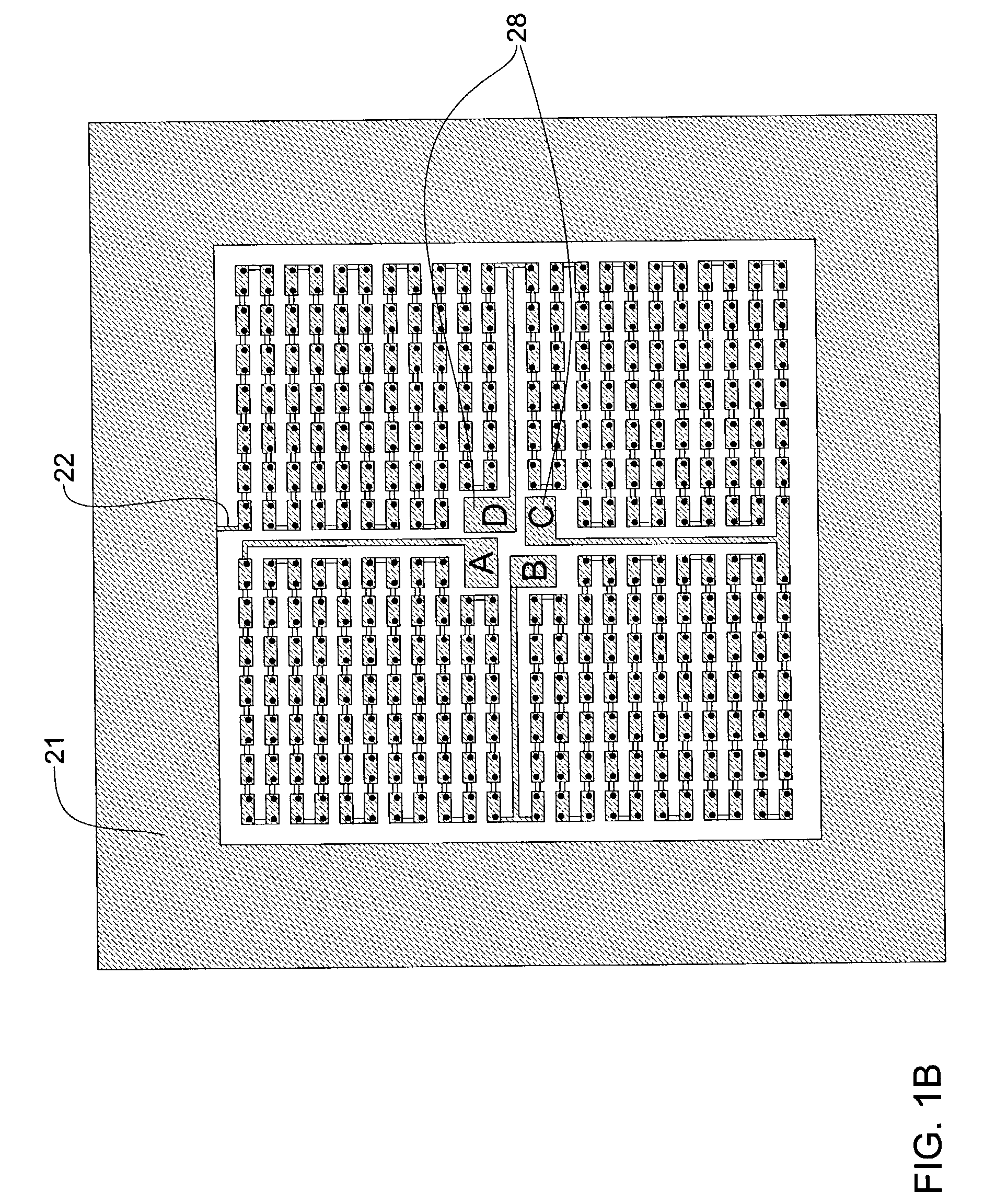Voltage contrast test structure
a voltage contrast and test structure technology, applied in the direction of individual semiconductor device testing, semiconductor/solid-state device testing/measurement, instruments, etc., can solve the problems of inherently slow scanning along the other axis, inconvenient testing, and inability to accurately detect the voltage difference, so as to achieve relative compactness and design freedom
- Summary
- Abstract
- Description
- Claims
- Application Information
AI Technical Summary
Benefits of technology
Problems solved by technology
Method used
Image
Examples
Embodiment Construction
[0019]FIG. 1A shows, by way of example, a pattern of a particular test structure according to the invention, designed to test for discontinuities, i.e. faulty open-circuit conditions, in interlayer connections (vias). The pattern is sized, along one dimension, to fit within a scribe-line; the size along the other dimension may be any. The structure consists of four conductive circuits 14, symmetrically arranged in respective quadrants of the rectangular pattern. Each circuit consists of a large number of conducting segments 16 on each of two layers, only the upper one of which is shown; the segments on the lower layer are schematically represented in the drawing by short lines appearing to connect between the upper segments. The segments are connected in series, alternatingly between the layers, through vias 15, to form a single conductive chain. One end of each chain (i.e. circuit) is connected to a virtual ground 11, at points 12, and the other end is connected to a pad 18 near th...
PUM
| Property | Measurement | Unit |
|---|---|---|
| electrically | aaaaa | aaaaa |
| size | aaaaa | aaaaa |
| electrical state | aaaaa | aaaaa |
Abstract
Description
Claims
Application Information
 Login to View More
Login to View More - R&D
- Intellectual Property
- Life Sciences
- Materials
- Tech Scout
- Unparalleled Data Quality
- Higher Quality Content
- 60% Fewer Hallucinations
Browse by: Latest US Patents, China's latest patents, Technical Efficacy Thesaurus, Application Domain, Technology Topic, Popular Technical Reports.
© 2025 PatSnap. All rights reserved.Legal|Privacy policy|Modern Slavery Act Transparency Statement|Sitemap|About US| Contact US: help@patsnap.com



